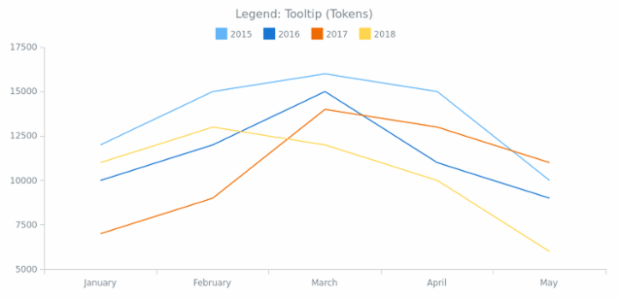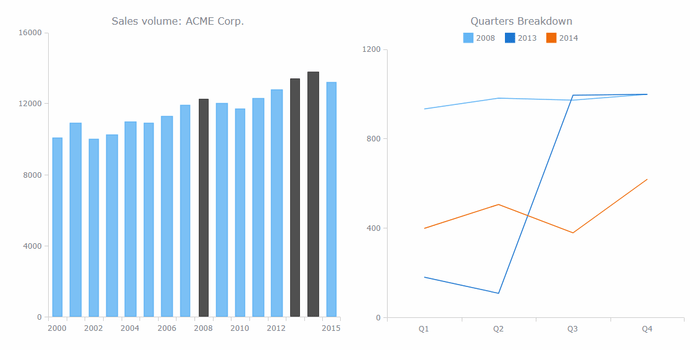

Sets the y position with respect to `yref` in normalized coordinates from "0" (bottom) to "1" (top). "paper" refers to the width of the plotting area only. "container" spans the entire `width` of the plot.

Type: enumerated, one of ( "container" | "paper" ) "auto" divides `xref` by three and calculates the `xanchor` value automatically based on the value of `x`. "left" means that the title starts at x, "right" means that the title ends at x and "center" means that the title's center is at x. Sets the title's horizontal alignment with respect to its x position. Type: enumerated, one of ( "auto" | "left" | "center" | "right" )

Sets the x position with respect to `xref` in normalized coordinates from "0" (left) to "1" (right). Note that before the existence of `title.text`, the title's contents used to be defined as the `title` attribute itself. The amount of padding (in px) along the top of the component. The amount of padding (in px) on the right side of the component. The amount of padding (in px) on the left side of the component. The amount of padding (in px) along the bottom of the component. Padding is muted if the respective anchor value is "middle"/"center". The same rule applies if `xanchor`/`yanchor` is determined automatically. for left padding to take effect, `xanchor` must be set to "left". Each padding value only applies when the corresponding `xanchor`/`yanchor` value is set accordingly. These include "Arial", "Balto", "Courier New", "Droid Sans", "Droid Serif", "Droid Sans Mono", "Gravitas One", "Old Standard TT", "Open Sans", "Overpass", "PT Sans Narrow", "Raleway", "Times New Roman". The Chart Studio Cloud (at or on-premise) generates images on a server, where only a select number of fonts are installed and supported. Provide multiple font families, separated by commas, to indicate the preference in which to apply fonts if they aren't available on the system. The web browser will only be able to apply a font if it is available on the system which it operates. HTML font family - the typeface that will be applied by the web browser. Note that the title's font used to be customized by the now deprecated `titlefont` attribute. Also, you can use some other methods from : object containing one or more of the keys listed below. Use the normal(), hovered(), and selected() methods.Ĭombine them with the stroke() method. The appearance settings of a Line chart can be configured in three states: normal, hover, and selected. Read the overview of general settings: General Settings.

In An圜hart there are many settings that are configured in the same way for all chart types, including the Line chart (for example, legend and interactivity settings). The following sample demonstrates how a basic Line chart is created: // create data
#CARTESIAN TOOLTIP ANYCHART SERIES#
To create a Line series explicitly, call the line() method. If you pass the data to this chart constructor, it creates a line series. To create a Line chart, use the anychart.line() chart constructor. The Line chart requires adding the Core and Basic Cartesian modules: Īlternatively, you can use the Base module, which includes, among other things, the two modules mentioned above: You can also see the table below to get a brief overview of the Line chart's characteristics:
#CARTESIAN TOOLTIP ANYCHART HOW TO#
This article explains how to create a basic Line chart as well as configure settings that are specific to the type. As a rule, it is used to emphasize trends in data over equal time intervals, such as months, quarters, fiscal years, and so on. The line chart is very common in many fields.


 0 kommentar(er)
0 kommentar(er)
